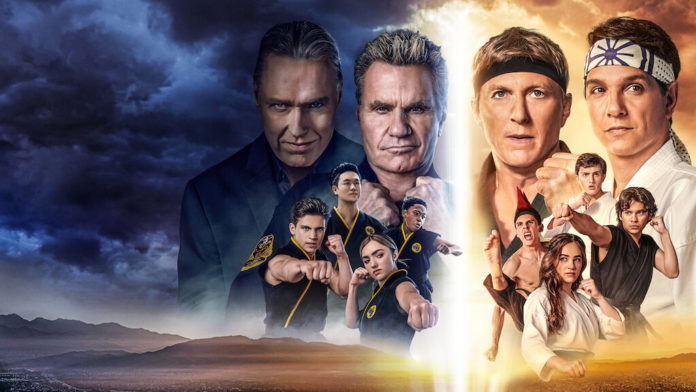By Emma Weidmann | Staff Writer
1984’s “Karate Kid” is known for having one of the most iconic bullies in cinema. Johnny Lawrence, star student of the violent and aggressive Cobra Kai Karate dojo, relentlessly picks on the underdog, Daniel LaRusso. For nearly 40 years, this was the only narrative set forth by the franchise: Underdogs always win, bullies lose and they deserve it.
The YouTube Red-turned-Netflix reboot “Cobra Kai” subverts all of that. Lawrence is no longer just a bad guy. In fact, the show questions if he ever really was. The audience learns early on of Lawrence’s abusive stepfather and complacent mother and about how Cobra Kai was both an outlet for his anger and a way to cope with how defenseless he felt at home. He is also separated from his affluent upbringing, living in a cheap apartment on a bad side of Los Angeles.
Meanwhile, Daniel LaRusso, who was once the scrawny kid from the neighborhood Reseda, is a successful car dealership owner, living luxuriously like he never imagined he could. When Johnny and Daniel’s paths cross again in the following four seasons, chaos ensues and old rivalries are dug up.
Lawrence’s actions — famously, “sweeping the leg” in the last round of the All-Valley Tournament — were wrong, but the show makes a point to acknowledge that this was a child unsupported at home and manipulated by his sensei, a fully grown man with a toxic set of values. He was every bit a victim of John Kreese, the main antagonist, and Cobra Kai as Daniel was.
The real instigator of the original movie, Kreese continues to lurk behind the scenes in “Cobra Kai,” using his masterful manipulation tactics to make children beat up other children once more. Despite the insistence of actor Martin Kove, his depiction of Kreese is the textbook definition of villainy and cunning.
In season three, it is revealed that Kreese was also bullied as a teenager and then served a traumatic few years in Vietnam. During those years, he became a fighter because he needed to. However, he was never able to shake the war mentality upon his return and began to wield it in harmful ways. In “Cobra Kai,” the story follows not only Daniel and Johnny, but their children and those children’s friends. After 40 years, Kreese is as toxic as ever, and the trauma that he inflicted on Lawrence and LaRusso persists.
One of the high points of “Cobra Kai” is that it does villains right by allowing them to be horribly wrong.
There is something so satisfying in an antagonist where there isn’t excuses made for them. Kreese is awful in so many ways and “Cobra Kai” is not afraid of that. A lot of films and shows in the last few years, most notably Disney’s “Cruella,” attempt to apologize for the inexcusable actions of their villains, usually by giving them a traumatic childhood.
Villains with a backstory are great. However, that backstory shouldn’t always try to make the audience sympathize with the villain. A character’s actions can be understandable without being justifiable, and so many writers miss this when trying to bring depth and context to a villain.






